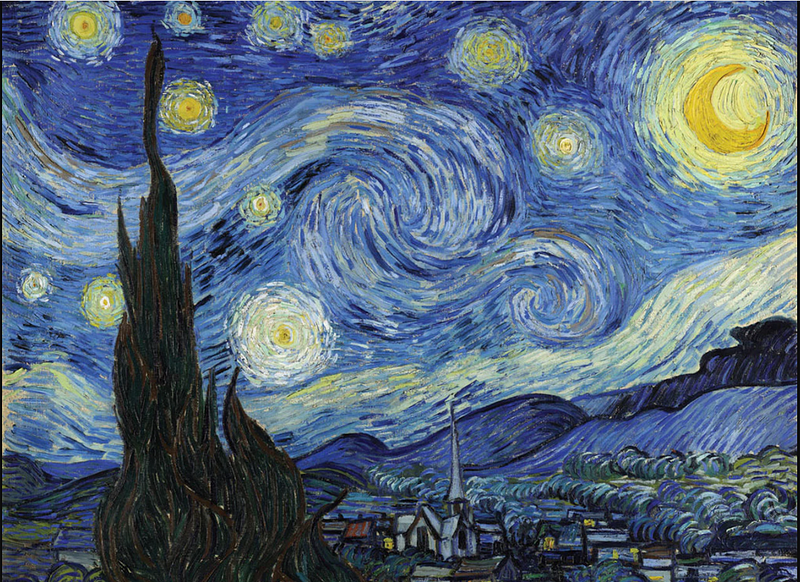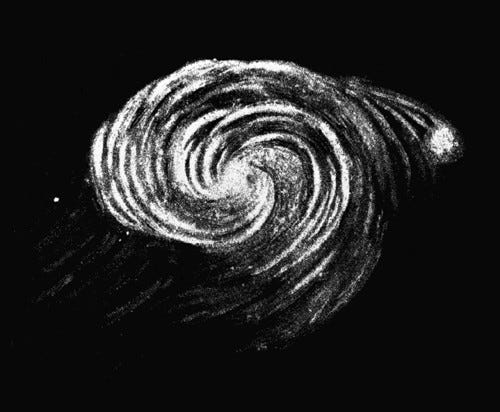The Intricate Mathematics of Van Gogh's "The Starry Night"
Written on
Chapter 1: The Turbulent Mind of Van Gogh
Vincent van Gogh's The Starry Night is not only a remarkable piece of art; it also serves as a lens through which we can explore the complex and often challenging concepts of turbulence and relativity. As the renowned physicist Werner Heisenberg once stated, he would inquire about these two difficult topics when meeting God, reflecting their intricacy in the realm of mathematics.
Painted in 1889 while he was at the Saint-Paul-de-Mausole asylum, The Starry Night stands as Van Gogh’s most celebrated work. Despite being created during the day, the painting captures a vibrant night scene, showcasing his unique perception of the world around him.

Van Gogh's Inspiration
In 1845, the Anglo-Irish astronomer William Parsons, 3rd Earl of Rosse, constructed the Leviathan of Parsonstown, a giant telescope that remained the largest globally until 1918. While observing the Irish skies, Lord Rosse documented unusual spiral formations that would later be identified as the Whirlpool Galaxy, which inspired Van Gogh's iconic painting.

The Mathematical Essence of the Masterpiece
Van Gogh and his fellow Impressionists revolutionized the depiction of light in their artworks, emphasizing the dynamic nature of light as it interacts with the night sky. The way colors blend on canvas is influenced by luminance, which affects how our brain perceives contrasting hues.
This innovative technique allowed the Impressionists to represent light's movement through vivid brushstrokes. Fast forward sixty years, and Russian mathematician Andrey Kolmogorov was making groundbreaking advancements in fluid dynamics. His work on turbulence, particularly how larger eddies transfer energy to smaller ones, parallels Van Gogh's artistic explorations.
In 2004, researchers found striking similarities between the turbulent flows in clouds around distant stars and Van Gogh’s artwork. When they analyzed the digital representations of his paintings, they discovered that the curves formed between pixels mirrored the patterns found in fluid turbulence. Remarkably, many of these artworks were produced during periods of Van Gogh's psychological distress, contrasting sharply with his calmer self-portrait.
Reflections on Art and Science
The Starry Night intertwines themes of art, science, and mental health, revealing a fascinating interplay between physical and psychological turbulence. Despite enduring significant personal suffering, Van Gogh captured complex scientific ideas about movement, fluidity, and light, making his work a profound exploration of the human experience.
Chapter 2: Discovering the Mathematics in Van Gogh’s Art
To delve deeper into the intricate relationship between mathematics and art, consider watching the following videos:
In the first video, "The unexpected math behind Van Gogh's 'Starry Night' - Natalya St. Clair," the presenter explores the mathematical concepts woven into this iconic painting.
The second video, "Better Know: The Starry Night | The Art Assignment | PBS Digital Studios," provides an engaging look at the significance of Van Gogh's masterpiece within the broader context of art history.
References
- The Fluid Dynamics of “The Starry Night”: How Vincent Van Gogh’s Masterpiece Explains the Scientific Mysteries of Movement and Light
- The unexpected math behind Van Gogh's "Starry Night" - Natalya St. Clair